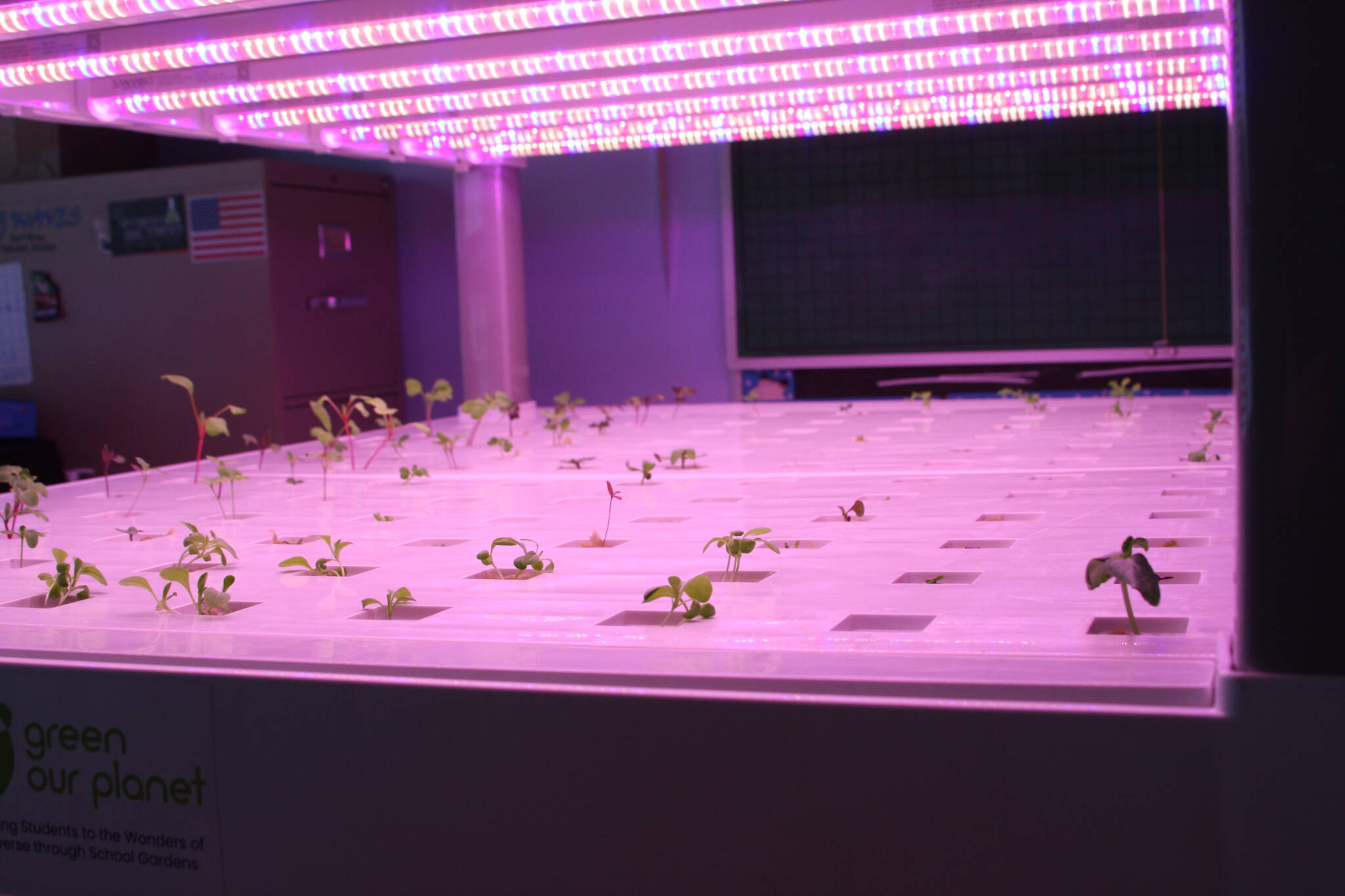Nikolaevsk School recently kick-started a student-run hydroponics program, funded by an $8,000 grant from national nonprofit organization Green Our Planet.
Green Our Planet’s mission is to “increase student academic performance in STEM subjects as well as to conserve and protect the environment through project-based STEM education, which includes nutrition, financial literacy and conservation education,” according to their website.
“[Green Our Planet] offered a program to us that’s worth about $10,000,” principal Matt LaHue told Homer News. “We got an $8,000 grant and we put in $2,000 of our money.”
The $2,000 matched by Nikolaevsk School came from the school coffers and is currently being replenished through fundraising efforts.
Lisa Robbins, special education aide at Nikolaevsk School, played a key role in applying for the grant, LaHue said. Nikolaevsk School curricula often involves project-based learning, and a hydroponics program was right up the students’ alley.
“Project-based learning means that the kids are building on something throughout a semester or year,” LaHue said.
By the end of the year not only do students have something to show for it, but they also have a portfolio they can show to possible employers or college recruiters, he said.
The hydroponics program also supports students in several state-required education standards, including family and consumer science, personal finance, business and biology and life sciences, according to Nikolaevsk School custodian and food service staff John Jones.
Jones has been directly involved in the program along with the other school staff, working to set up the hydroponics room and equipment.
All students at Nikolaevsk School, from kindergarten through 11th grade, are taking part in the program, growing flowers, greens, microgreens and herbs, fruits and vegetables using the hydroponics systems that school staff set up in a designated science classroom. Students in middle and high school grades each share a growth pod with an elementary student in order to help the younger kids and increase the variety of growing options. Every student was allowed to choose what they wanted to grow in their half of the pods.
With 30 students this year, an increase from six students last year, the program provides many opportunities for bountiful harvests. The school has also set up a larger hydroponics unit, called a flood table, in addition to the students’ individual growth areas.
Indoor hydroponics systems are particularly useful in cold climate areas, where the growing season is typically much shorter than in warmer climate areas. Nikolaevsk students began planting near the end of January and, to date, have already begun to see crops sprouting.
“This hydroponics program allows us to start things now, and possibly even have our first harvest by March,” LaHue said. “We could possibly have multiple harvests throughout the year before the growing season in Alaska even starts.”
By participating in the hydroponics program, students are not only learning about organic gardening and gaining agricultural hands-on knowledge and skills, but they’re also learning about economics and business practices.
The school has several plans in the works for the crops they will be able to harvest, including incorporating them into the school lunch program and selling produce and flower starts at the Nikolaevsk farmer’s market that is held in the village every Thursday from June to October.
Funds raised from sales will flow back into the hydroponics program, ensuring its sustainability as a project-based learning system for students to enjoy throughout multiple years. Surplus funds may also be used to fund the student council, as well as program-relevant field trips and learning opportunities for students to take part in.
Participation in the school’s hydroponics program isn’t limited to the students; all school staff are involved with the units’ set-up and maintenance, as well as supervising the students and their plants. Parents and village residents have also donated time, money and supplies to the program. In turn, the benefits resulting from the program and crop harvests will positively impact the wider Nikolaevsk community.
“Everybody has really stepped up,” LaHue said. “It’s a small school, small staff, everybody really has to pitch in — everyone has knocked this out of the park. I’m amazed at what we can do with the staff we have. We can do such big things.”
Project-based programs like hydroponics also has the potential to directly impact student enrollment at Nikolaevsk School, LaHue said, as prospective students and parents learn about and express interest in such educational opportunities the school provides. Nikolaevsk School is looking forward to seeing the results of their harvests, as well as continued opportunities for growth.
For more information on the organization, visit greenourplanet.org/.


